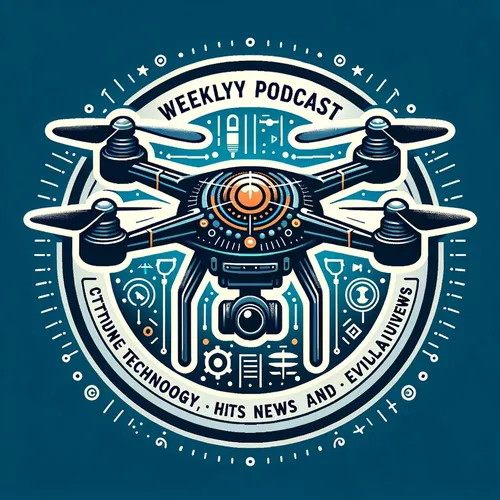Drone Drama: ZenaTech's AI Swarms, Nokia's EU Moves, and Ukraine's FPV Edge
- Author
- Quiet. Please
- Published
- Wed 04 Jun 2025
- Episode Link
- https://www.spreaker.com/episode/drone-drama-zenatech-s-ai-swarms-nokia-s-eu-moves-and-ukraine-s-fpv-edge--66392494
This is you Drone Technology Daily: UAV News & Reviews podcast.
Today’s drone technology landscape is marked by rapid innovation and expanding influence across both enterprise and consumer sectors. Over the past 24 hours, ZenaTech has captured headlines by announcing advances in artificial intelligence-powered drone swarms, now underpinning everything from military reconnaissance and targeting to commercial wildfire and extreme weather management solutions. As ZenaTech prepares to showcase its latest developments at three investor conferences, CEO Shaun Passley emphasizes that success increasingly hinges on intelligent, networked drone systems delivering speed and autonomous data gathering, rather than just brute force or firepower. Meanwhile, in Europe, Nokia leads a major robotics and unmanned technology initiative. The PROACTIF project, backed by the European Union, aims to generate significant revenue for the continent and drive new best practices in emergency response and critical infrastructure using drones. With these developments, global leaders are signaling not just technical prowess but also an ambition to make drones daily helpers in public safety and mission-critical applications.
In the commercial realm, a new Forrester Research report highlights how drones are transforming labor-intensive industries—boosting safety, reducing costs, and streamlining operations by addressing inefficiencies of manual processes. Analysts note that drones excel in hazardous, hard-to-reach environments, with a single operator now able to deploy multiple AI-driven units for tasks ranging from inspections to deliveries. This capacity for “airborne automation” is poised to further evolve as technology matures and regulatory frameworks adapt. Speaking of regulations, United States drone operators are reminded that all craft weighing more than 0.55 pounds must be registered with the Federal Aviation Administration, and any commercial operation requires a Part 107 remote pilot certificate. Recent changes related to national security also loom large: new legislative language means major brands such as DJI and Autel face heightened scrutiny, with potential bans now hinging on reviews by a designated national security authority. Operators should stay alert, as supply chain and compliance risks could soon impact availability and usage of popular drone models.
Turning to technical performance, Ukraine’s ongoing innovation in First Person View drones offers a compelling case study. By early 2025, Ukrainian manufacturers ramped up production to 200,000 units per month, providing key battlefield advantages and reshaping strategies with inexpensive, high-impact hardware. Lessons from Ukraine—such as the pivot to fiber-optic drones to avoid jamming—are informing best practices and tactical evolution worldwide. For consumers and enterprises alike, experts advise up-to-date knowledge of operational regulations, regular equipment maintenance, and use of software that ensures compliance with airspace restrictions such as the FAA’s B4UFLY app.
Looking ahead, the intersection of quantum computing, AI, and swarm technology promises to redefine what drones can accomplish, from rapid disaster response to seamless integration with smart infrastructure and logistics networks. Practical takeaways for operators and businesses are clear: invest in training, monitor for regulatory changes, and focus on platforms that can scale with advancing networking and autonomy features. In a landscape where safety, regulation, and innovation move in tandem, staying informed is not just smart—it is essential for all stakeholders in the unmanned aerial vehicle ecosystem.
For more http://www.quietplease.ai
Get the best deals https://amzn.to/3ODvOta
